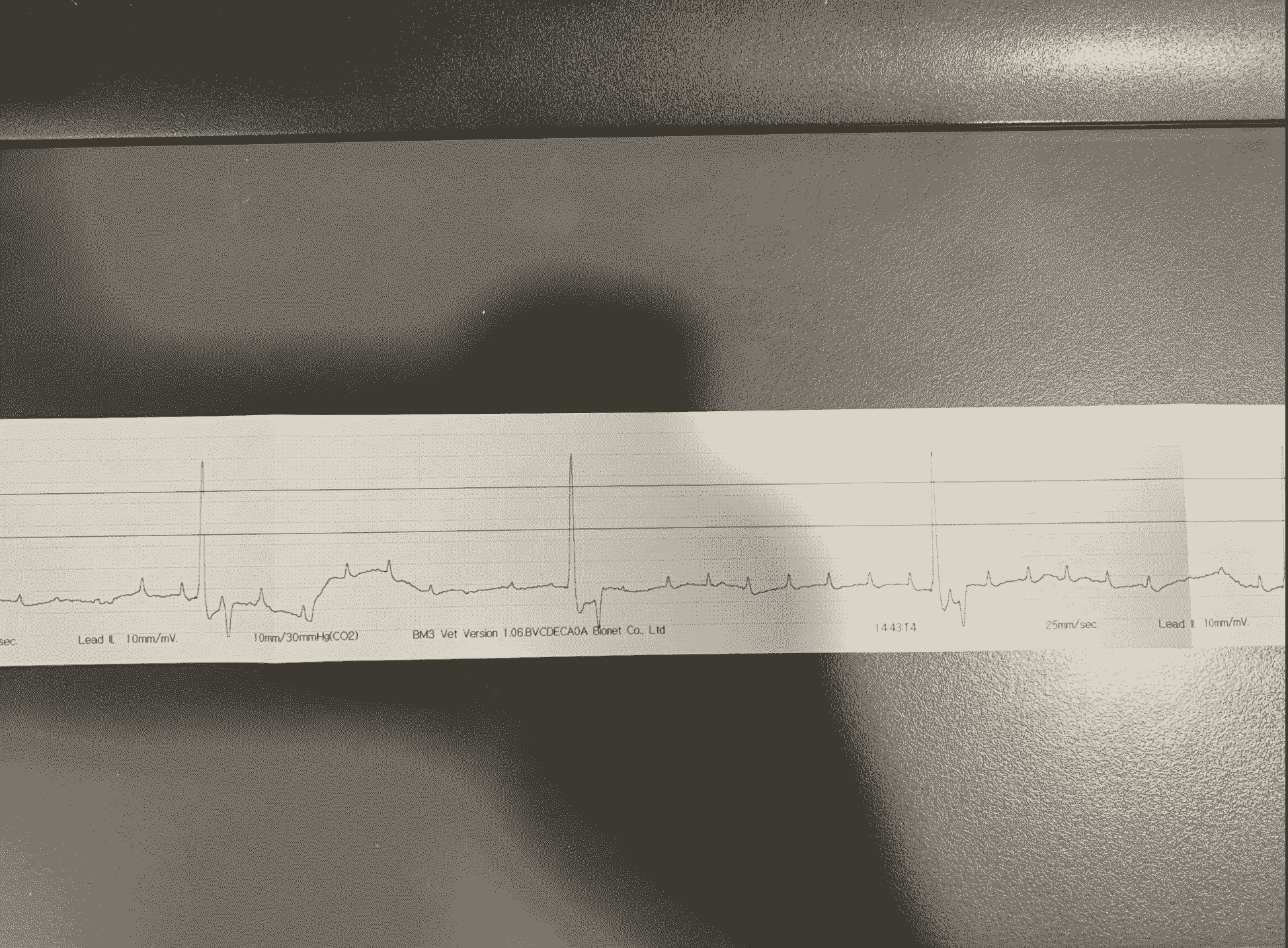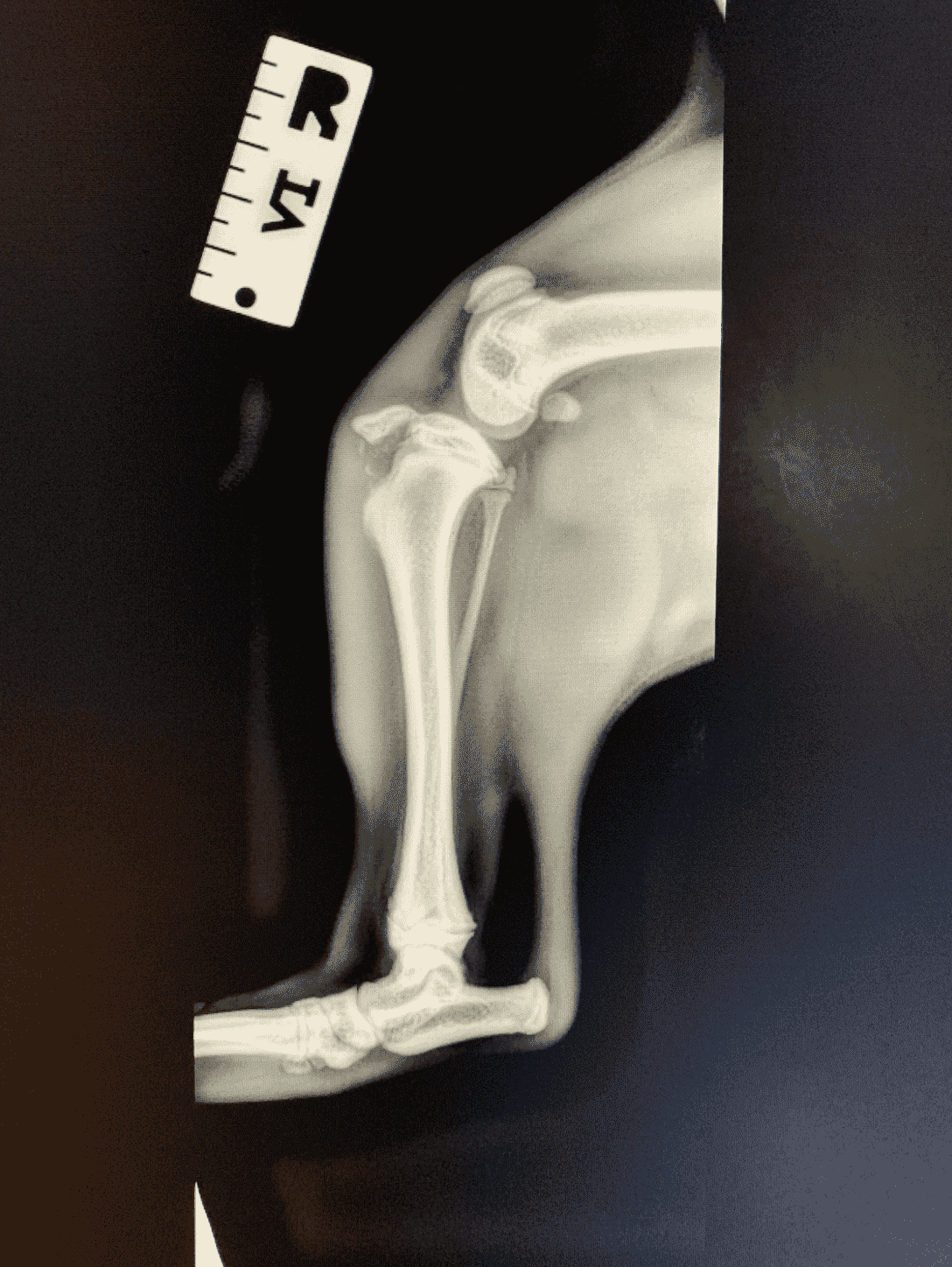Depending on the type of small animal veterinary clinic, general practice, specialist, or emergency, there can be various causes that veterinarians and veterinary nurses are exposed to daily. General practice clinics will see the largest range of cases varying from annual health checks/vaccinations to complex medical & surgical cases.
The case and the veterinarian’s skillsets will determine if the complex cases are treated in-house or referred to a specialist or emergency 24h facility. Below are two different interesting cases presented to our general practice clinic.
Cardiac pacemakers – dogs need them too!

Image (ECG trace) is for the 1st case of Coco.
A little 10-year-old Cavoodle named Coco presented to our clinic with a history of lethargy (low energy levels), reluctant to play as usual and had some exercise intolerance starting a few weeks ago.
On examination, the only abnormality noted was an irregular heart rhythm & inappropriately slow heart rate (around 25-30 beats/minute). Normal adult dogs’ heart rates are around 70-120 beats/minute.
The next step was to perform an electrocardiogram (ECG). Together with the nursing team, we attached Coco to the ECG leads and ran the ECG. ECGs are best when the patient is calm and still – enabling a more accurate reading.
Unfortunately, the ECG confirmed that Coco had a 3rd degree atrioventricular (AV) block – see an image of the ECG trace. As you will see, the ECG does not look like a “normal” heartbeat with significant gaps between the “QRS complex”. This meant that the top section of Coco’s heart (responsible for maintaining a normal heartbeat) wasn’t communicating with the bottom section of the heart.
This meant that the bottom section of the heart had to create its beat for Coco to survive, hence the inappropriately low heart rate.
This little girl cannot increase her heart rate above 30 beats/min, which explains her lethargy and reduced exercise tolerance.
So how do we treat a 3rd degree AV block in dogs? Pacemaker implantation!
In Coco's case, we referred her to a heart specialist (cardiologist). The cardiologist performed an echocardiogram (heart ultrasound) before checking for other heart issues.
The cardiologist performed the surgery and implanted the pacemaker into the heart. Coco’s heart rate is now set to a minimum of 70 beats/minute. Coco responded well to the surgery, and her energy levels are back to normal! Coco is now safe and well home with her family!
Young dog hindlimb limping – think of the tibia!

Images (X-rays) is Fred.
A young French Bulldog puppy named Fred presented to our clinic with a history of sudden right hindlimb lameness (limping). The owners didn’t see any major trauma, but they think he might have tried to jump up onto the bed and missed.
When examining the puppy, his right stifle (knee) was painful and swollen. The next steps included x-rays to investigate the limping.
To perform X-rays, we sedated Fred to allow us to (a) obtain good quality X-rays and (b) ensure we (veterinarians & nurses) are not unnecessarily exposed to radiation. Different clinics will use different combinations of medications and dosages for sedations – in this case; we used Medetomidine and Butorphanol. Becoming comfortable with different medication names and their purposes is extremely helpful!

Images (X-rays) is Fred.
We performed x-rays which revealed the puppy had fractured his tibia (bone in the leg). The specific fracture area was the tibial crest, which is prone to fracturing in young dogs if they hurt their stifle. See the x-rays attached, right and left stifle, for comparison.
After discussion with the owners, we elected to proceed with surgery to repair the tibial crest avulsion (fracture). Given that we could do this surgery in the clinic, it did not require a referral to a specialist (like the pacemaker case above). The veterinary nurses assisted in preparing the patient for anaesthesia and preparing the surgical site – read our previous blog about anaesthesia in veterinary medicine.
The fracture was repaired with tension bands; see the x-ray attached. The implants will not be removed and will remain in the stifle. After rest and progressive controlled exercise, the fracture site will heal, and little Fred will return to running and playing in no time!

Images (X-rays) is Fred.
Want to work in Animal Health? Then get started with an entry-level online course of Veterinarian Courses.
Dr Mark J Tenenbaum
OCA MENTOR & VETERINARIAN
Founder of The Vet Society
Online Courses Australia is a short course CPD Endorsed training provided covering more than 20 different professional areas; call us today at 1300 611 404 or email our friendly team at [email protected], and we'll be happy to talk you through some of your Animal Health course options.





















